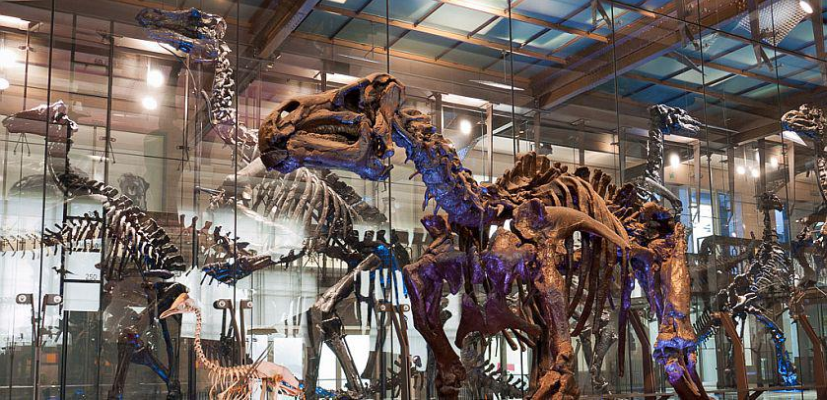LifeWatch Belgium: a highly innovative infrastructure for biodiversity research
On November 19 2019, the second edition of the LifeWatch.be Users & Stakeholders meeting was organized at the Royal Belgian Institute of Natural Sciences (RBINS) in Brussels.

LifeWatch Belgium is one of the national nodes of the European LifeWatch infrastructure, and can be described as a high-technology virtual laboratory for biodiversity research. To exhibit its progress, the Belgian LifeWatch community met for the second time during a one-day event on November 19 2019. This event was open to all users and stakeholders of the Belgian LifeWatch infrastructure. With a total of 74 participants from a multitude of Belgian research institutes, universities and policy bodies, it turned out to be an interesting and insightful event!
The day started with Philip Van Avermaet, head of the Science Division of the Flanders Department of Economy, Science and Innovation (EWI), sharing his views on how research infrastructures such as LifeWatch can be at the service of science. Next, Christos Arvanitidis, the LifeWatch ERIC CEO, explained the mission of and recent developments within the European LifeWatch infrastructure. Klaas Deneudt from the Flanders Marine Institute (VLIZ) then presented how LifeWatch Belgium is a biodiversity infrastructure supporting science, industry, policy and civil society. During the remainder of the day, several use cases showcased the versatility of LifeWatch Belgium into more detail.


Policy supporting use cases:
The day ended with a panel discussion about the use and value of LifeWatch (Belgium) for science, policy and industry.
The event clearly demonstrated that the Belgian LifeWatch community is an active and involved one. The multitude of interesting and impressive user stories highlighted the individual projects that are going on and the immense progress LifeWatch Belgium is making.
Furthermore, on November 20th, the Belgian LifeWatch partners met for an extended project meeting. This meeting was dedicated to evaluate the LifeWatch.be Users & Stakeholders Meeting of the day before, and to discuss internal affairs concerning LifeWatch Belgium, input towards the upcoming LifeWatch General Assembly and closer collaboration between the ongoing LifeWatch projects in Belgium.
The program is available on the link below.
The abstract booklet is available here.
Image credits:
The day started with Philip Van Avermaet, head of the Science Division of the Flanders Department of Economy, Science and Innovation (EWI), sharing his views on how research infrastructures such as LifeWatch can be at the service of science. Next, Christos Arvanitidis, the LifeWatch ERIC CEO, explained the mission of and recent developments within the European LifeWatch infrastructure. Klaas Deneudt from the Flanders Marine Institute (VLIZ) then presented how LifeWatch Belgium is a biodiversity infrastructure supporting science, industry, policy and civil society. During the remainder of the day, several use cases showcased the versatility of LifeWatch Belgium into more detail.


Policy supporting use cases:
- If life was simple... GPS tracking data provides new insight in the use of offshore wind farms by Lesser Black-backed Gulls (Eric Stienen, INBO)
- Transboundary Land Cover Dataset for Nature Protection (Corentin Rousseau, WWF)
- Surveillance of mosquitoes and other blood-sucking arthropods that can act as human disease vectors during foreign deployments of Belgian Defense (Leen Wilmaerts, Medical Component of the Belgian Armed Forces)
- How the LifeWatch Species Information Backbone supports global fisheries policies and management (Lennert Schepers, VLIZ)
- Using bird remains identification at the Belgian Air Force to improve flight safety (Commandant Serge Sorbi, Wildlife Hazard Management Office, Belgian Air Force – Aviation Safety Directorate (ASD))
- Gathering ecological data on movement behaviour of Atlantic cod in support of gas and oil industry (Jan Reubens, VLIZ)
- Tracking of marine predators in the Southern Ocean (Anton Van de Putte, RBINS)
- CATREIN : CAmera Trap REsearch Infrastructure in support of a growing number of wildlife related research projects (Jim Casaer, INBO)
- High resolution mapping of population dynamics in breeding birds in Wallonia (Antoine Derouaux, NATAGORA)
The day ended with a panel discussion about the use and value of LifeWatch (Belgium) for science, policy and industry.
The event clearly demonstrated that the Belgian LifeWatch community is an active and involved one. The multitude of interesting and impressive user stories highlighted the individual projects that are going on and the immense progress LifeWatch Belgium is making.
Furthermore, on November 20th, the Belgian LifeWatch partners met for an extended project meeting. This meeting was dedicated to evaluate the LifeWatch.be Users & Stakeholders Meeting of the day before, and to discuss internal affairs concerning LifeWatch Belgium, input towards the upcoming LifeWatch General Assembly and closer collaboration between the ongoing LifeWatch projects in Belgium.
The program is available on the link below.
The abstract booklet is available here.
Image credits:
- Image of the "Dinosaur Gallery" via the Royal Belgian Institute of Natural Sciences (RBINS) (https://www.naturalsciences.be/en/museum/exhibitions-view/239/394/390)
- Image of the LifeWatch.be User & Stakeholders Meeting is ©?VLIZ.



